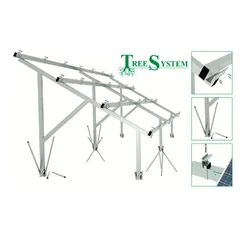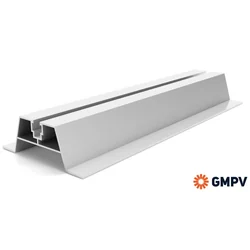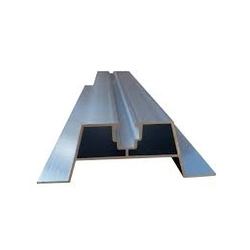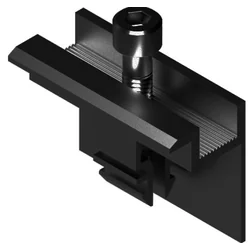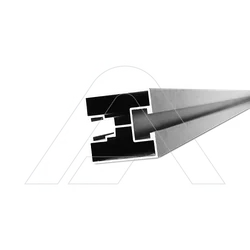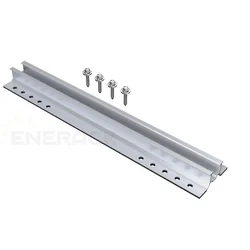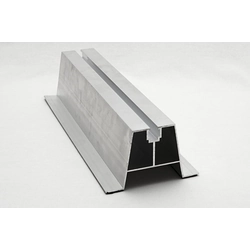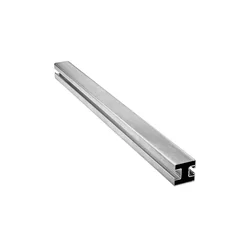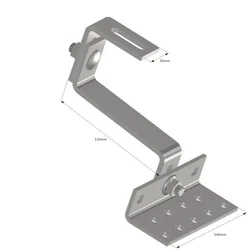Maximize Your Solar Potential: 10 Best Mounting Systems for Renewable Energy Projects
Top 5 Ground-Mounted Solar Systems
ground-mounted solar systems are a popular choice for large-scale projects. They provide easy access for maintenance and can be custom-tailored for specific site conditions. Some of the best options include: 1. fixed-tilt systems, known for their simplicity and affordability; 2. Single-axis tracking systems, which follow the sun's path for increased efficiency; 3. Dual-axis tracking systems, offering even higher energy yields by adjusting both vertically and horizontally; 4. Seasonal-adjustment systems that can be manually set for optimal tilt throughout the year; and 5. Ballasted ground mounts, ideal for non-penetrating installations on flat surfaces.
Top offers

SILVER end clamp 30mm aluminum
PLN 0.74

VARIO roof hook for Photovoltaics with double adjustment 140mm thick 1.4016
PLN 9.50
PLN 10.99

Universal SILVER aluminum center clamp
PLN 0.74
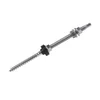
Double-threaded screw M10x250 for rafters DOUBLE-THREAD 10*250 complete with nuts and EPDM
PLN 2.75
PLN 2.98
Top 5 Roof-Mounted Solar Solutions
roof-mounted solar systems are perfect for businesses with limited space or strict land use regulations. The top five systems are: 1. flush mounts, providing a sleek appearance and minimal wind resistance; 2. Tilt-up mounts, designed for flat roofs or low-slope installations; 3. Ballasted roof mounts, requiring no roof penetrations and adaptable to a range of roofing materials; 4. Elevated racking systems, maximizing space efficiency by allowing for additional usage below the panels; and 5. building-integrated photovoltaics, where solar panels replace conventional building materials, improving aesthetics and reducing installation costs.

merXu Protected Payments
Sliding key with ball, sliding nut for M8 profiles for fastening clamps
€0.00
+VAT
€0.00

merXu Protected Payments
PV mounting profile 40X40 mm 4.80 m SLIDING GROOVE CHANNEL
€0.00
+VAT
€0.00

merXu Protected Payments
Roof holder - ceramic and concrete roof tiles, adjustable, VARIO hook
€0.00
+VAT
€0.00

merXu Protected Payments
WHOLESALE Pallet 156 pcs. rail, mounting profile, aluminum 40x40mm, length 235cm
€0.00
+VAT
€0.00
Choosing the Right Mounting System
Selecting the best mounting system for your renewable energy project requires careful consideration. Evaluate key factors such as: 1. Project size and scale, determining the optimal balance between efficiency and cost; 2. Geographic location, taking into account regional weather patterns, sun exposure, and permitting regulations; 3. Roof type or ground conditions, ensuring compatibility with preferred mounting solutions; 4. Budget constraints, noting that more advanced systems typically carry higher price tags; and 5. Maintenance requirements, understanding that some systems may necessitate routine adjustments or periodic servicing.

merXu Protected Payments
Enerack, Mini Rail, H-26mm, L-250mm, Silver, ERK-TRB-D10-250
€0.00
+VAT
€0.00

merXu Protected Payments
Package 100 pcs. universal center clamp for mounting PV panels
€0.00
+VAT
€0.00

merXu Protected Payments
WHOLESALE package 50 high trapezoidal bridge - trapezoidal sheet holder 330mm height 70mm, mortise + seal
€0.00
+VAT
€0.00
K2 MiniRail MK2 Set
€0.00
+VAT
€0.00

merXu Protected Payments
Aluminum profile rail mounting photovoltaic panels 40x40x3.3 m
€0.00
+VAT
€0.00

merXu Protected Payments
Stainless steel Allen screw M8x20 DIN912 A2 – 100 pieces photovoltaics
€0.00
+VAT
€0.00

merXu Protected Payments
VARIO roof hook for Photovoltaics with double adjustment 120mm thick A2!1.4301
€0.00
+VAT
€0.00
